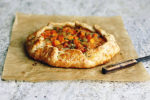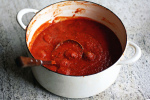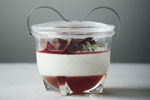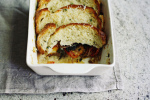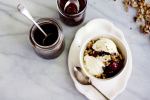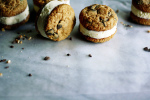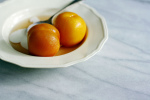All the more welcome
 Thursday, March 19, 2009 at 3:25PM
Thursday, March 19, 2009 at 3:25PM 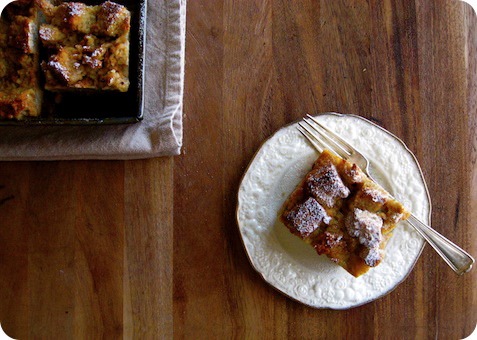
Some leftovers lose their allure rather quickly. Seemingly overnight, they become insufferably-dull house guests who have overstayed their welcome. In the light of day, gone is their allure, and with it, any remnants of your hospitality.
Most members of the fried food family, for example, fall into this category. They are the sort of guest with only one amusing anecdote to share. Sure, they are ever so witty and amusing for that one story, but a singular performance is all they can muster. After that, the conversation falls flat and everyone is looking at their watches, praying that nobody is in the mood to stick around after dessert is finished.
On the other hand, there are those dishes you hope will stick around long enough to become leftovers; in fact, you anticipate their arrival. Every Thanksgiving, whether it is me or another family member roasting the requisite bird, we purposely over-estimate our needs just so we will have some left over. Goodness knows, turkey sandwiches in the days following are almost more tempting than the feast the day before.
Roasted vegetables are agreeable fresh off the barbecue and paired with grilled meats for supper, but they are all the more welcome the next day when they reappear in a sandwich or are tossed with some greens for a salad. These are the sort of kitchen guests you look forward to, those which seem sublime at all times, even if their sojourn lasts more than a day or two.
Bread might be the most wonderful of leftovers, with almost endless charms. Slightly-past-its prime brioche is perfect for summer pudding, and I am altogether too happy to have a country boule hang about, drying out, just so there can be a panzanella in a few days.
Up until last evening, our inordinately-large bread box was playing host to the stragglers from our St. Patrick's Day festivities, a half-eaten round of Irish soda bread. While the loaf was far from dry, thoughts of bread pudding inspired an impromptu kitchen visit.
Eggs, milk cream and sugar blended together in a quick custard base. Cubed bread took to its bath, soaking for a long while. After a slathering of velvety raisin jam, the bread rested again, before a long, low bake in the oven. Still warm, the bread had the slightest bit of resistance left, only just yielding to the tooth.
Exactly the sort of company I was looking for.
Irish soda bread pudding with raisin jam
This is a hearty, not overly-sweet rendition of bread pudding; suited as much for breakfast as it would be for dessert. The raisin jam, which is really more a purée, was included for a loved one who likes the taste of cooked raisins but not their texture. Layered in the pudding, the raisin jam becomes a dark ribbon of concentrated raisin-ness, ginger and spice. I particularly enjoyed how the crags and crevices of the bread cubes allowed for alternating pools of jam, then rivulets, so that each bite had its own character.
Ingredients for bread pudding
4 eggs, at room temperature
1/3 cup brown sugar, packed
1/2 teaspoon vanilla
1/2 teaspoon ground cinnamon
1/8 teaspoon ground nutmeg
1/8 teaspoon kosher salt
3 cups milk
1 half and half
A generous 6 cups of 3/4-inch cubed Irish Soda Bread, see note
1 recipe raisin jam
Ingredients for raisin jam
1 cup raisins
1/2 cup water
2 tablespoons orange juice
1/4 teaspoon freshly grated ginger
1/4 teaspoon cinnamon
1/8 teaspoon salt
Make the jam first; in a small saucepan over medium-high heat, combine all the jam ingredients. Bring to a boil, then reduce heat to maintain a simmer for around 10 minutes, stirring occasionally. At this point, the raisins should be soft and plumped, with a bit of moisture left in the pan. If it gets too dry and sticky, add more water, a tablespoon at a time. Working carefully, transfer the raisins to a small food processor or blender and purée until fairly smooth, again adding more water if necessary. The purée should be rather thick, but spreadable. Remove the jam to a bowl and allow to cool.
Meanwhile, lightly grease a 9-by-9-inch baking pan with butter and set aside.
In a large bowl, whisk together the eggs, brown sugar, vanilla, spices and salt. Whisk in the milk, continuing until all the ingredients are well-combined and the sugar is dissolved. Add the cubed bread, pressing down to submerge it into the milk mixture, and set aside to soak for around 30-40 minutes. By that point, almost all the liquid should be absorbed.
Preheat an oven to 350°F (175°C).
Spread half of the bread cubes in the prepared baking dish, making an even layer. Spoon the raisin jam over the cubes, spreading to cover all but a 1/4-inch border around the sides. Carefully top with remaining bread. If any liquid remains in the bowl, pour it over the pudding; soak for 10 minutes.
Set the baking dish in a larger roasting pan, and put in the preheated oven. Pour very hot water into the roasting pan, until it comes halfway up the side of the baking dish. Bake the bread pudding for about 50-60 minutes, or until a knife inserted near the centre comes out almost clean.
Serve warm or at room temperature, dusted with icing sugar or a drizzle of maple syrup.
Makes one 9-by-9-inch pan, serving 8.
Notes:
• The character of your soda bread will make all the difference here; I like a loaf that incorporates at least some whole wheat or oats, for added texture. The density of the bread will also determine how much soaking time is necessary. Be patient, and adjust timing accordingly.
• For a taller bread pudding, which is my preference, use a greased 8-by-8-inch baking pan instead. In this case, it may be that not all the liquid will fit in the pan right away. Pour as much as possible in without overflowing, let stand until absorbed and then repeat until done. Resist the urge to compress the bread too much, too soon. The cooking time will need to be longer to compensate for the additional depth.
 baking,
baking,  bread pudding,
bread pudding,  breakfast,
breakfast,  dessert,
dessert,  eggs,
eggs,  oats,
oats,  raisin jam,
raisin jam,  raisins,
raisins,  soda bread
soda bread 

